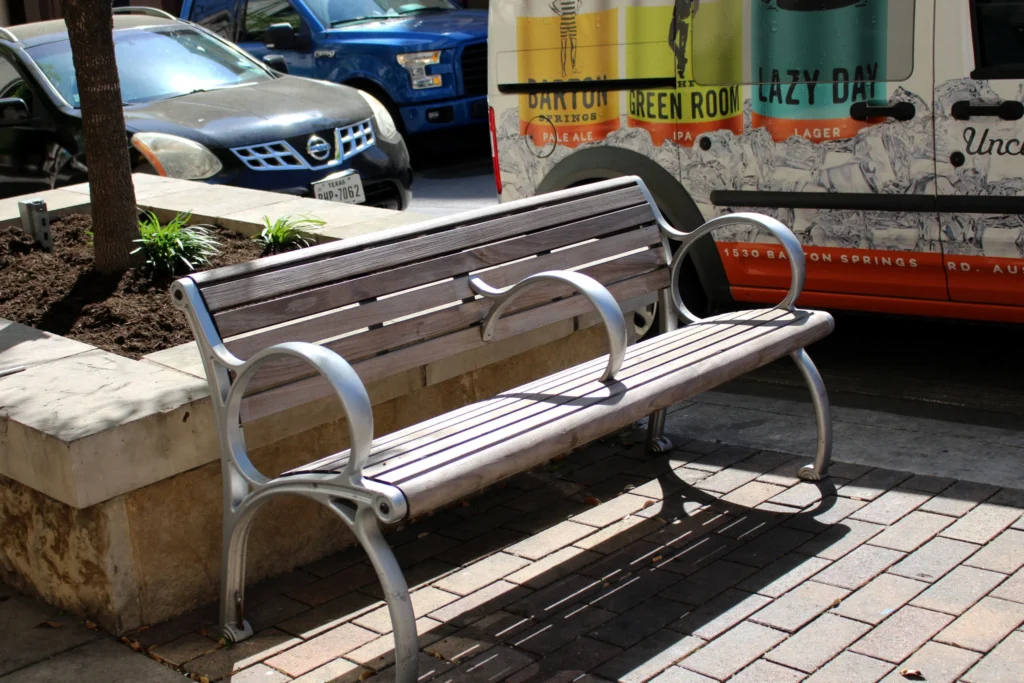- This article delves into the origins, forms, motivations, consequences, and ethical implications of anti-homeless architecture, while exploring potential alternatives that balance urban functionality with social compassion.
Common Features of Anti-Homeless Architecture
- Examples of Defensive Design Motivations Behind Anti-Homeless Architecture
- The rationale for implementing hostile architecture varies but often centers on concerns about urban management and public safety.
- Property owners, businesses, and municipalities advocate for these designs to create environments that attract commerce and tourism while reducing perceived risks associated with homelessness.
Key Motivations

- Public Safety: Defenders argue that these measures prevent crime, protect pedestrians, and ensure safe access to public areas.
- Aesthetic Appeal: Urban designers claim that hostile architecture enhances the visual quality of cities by minimizing signs of poverty.
- Economic Interests: Businesses see anti-homeless measures as a way to maintain foot traffic and customer comfort, preventing potential deterrents like encampments.
- Functional Use of Space: Some cities view these designs as a way to allocate public spaces for specific purposes, such as transit, recreation, or retail.
The Ethical Dilemma of Hostile Architecture
- Critics argue that anti-homeless architecture prioritizes property and aesthetics over the well-being of society’s most vulnerable. By design, it marginalizes people experiencing homelessness, treating them as problems to be removed rather than individuals deserving of compassion and dignity.
Key Ethical Concerns
- Dehumanization: Defensive designs strip homeless individuals of basic rights, such as the ability to rest or seek shelter in public spaces.
The Impact on Homeless Communities
- For individuals experiencing homelessness, anti-homeless architecture presents significant challenges that go beyond inconvenience. It directly affects their ability to find safety, rest, and dignity in urban environments.
Consequences for the Homeless
- Increased Vulnerability: By limiting safe spaces for rest, individuals are forced to seek shelter in more isolated and unsafe locations.
- Health Deterioration: Lack of access to proper rest and shelter exacerbates physical and mental health issues.
- Social Alienation: Hostile designs reinforce feelings of invisibility and exclusion, intensifying the stigma of homelessness.
- Cycle of Displacement: Individuals are continually moved from one location to another without any resolution to their circumstances.
Alternatives to Hostile Design
- Urban planners, activists, and social organizations advocate for inclusive approaches that address homelessness through compassion and systemic change rather than exclusion.
Potential Solutions
- Affordable Housing Initiatives: Programs like “Housing First” prioritize providing permanent housing to homeless individuals before addressing other issues.
- Supportive Infrastructure: Cities can invest in features like public restrooms, lockers, and shelters to meet the basic needs of all residents.
Community Engagement
- Involving homeless individuals in urban planning can lead to more equitable solutions and a deeper understanding of their needs.
- Social Services: Enhanced access to mental health care, job training, and addiction recovery programs can help individuals regain stability.
Universal Design Principles
- Designing spaces to accommodate diverse users—including those experiencing homelessness—promotes inclusivity and equity.
- Case Studies: Cities Tackling Homelessness Differently
- Hostile Design in Practice
- London, UK: The installation of anti-homeless spikes outside residential and commercial buildings drew widespread criticism and protests, sparking debate over urban design ethics.

- San Francisco, USA: Benches and ledges with partitions have become common in high-traffic areas, raising questions about the city’s priorities in addressing homelessness.
Inclusive Approaches
- Helsinki, Finland: Through its “Housing First” model, the city provides permanent housing as the first step in addressing homelessness, significantly reducing its prevalence.
- Portland, Oregon, USA: Certain parks and community centers incorporate features like day-use lockers and showers, creating spaces that benefit all residents, including the homeless.
- Moving Beyond Hostility.
Rethinking Urban Design
- The presence of homelessness in cities is a complex issue rooted in systemic inequalities. Defensive architecture, while addressing surface-level concerns, fails to provide sustainable or humane solutions. Instead, it highlights the need for a broader cultural shift toward empathy and social responsibility.
Conclusion: Building Cities for Everyone
- The challenge is not merely architectural but moral. As we design the cities of the future, the question remains: will we build walls that divide, or bridges that unite?
